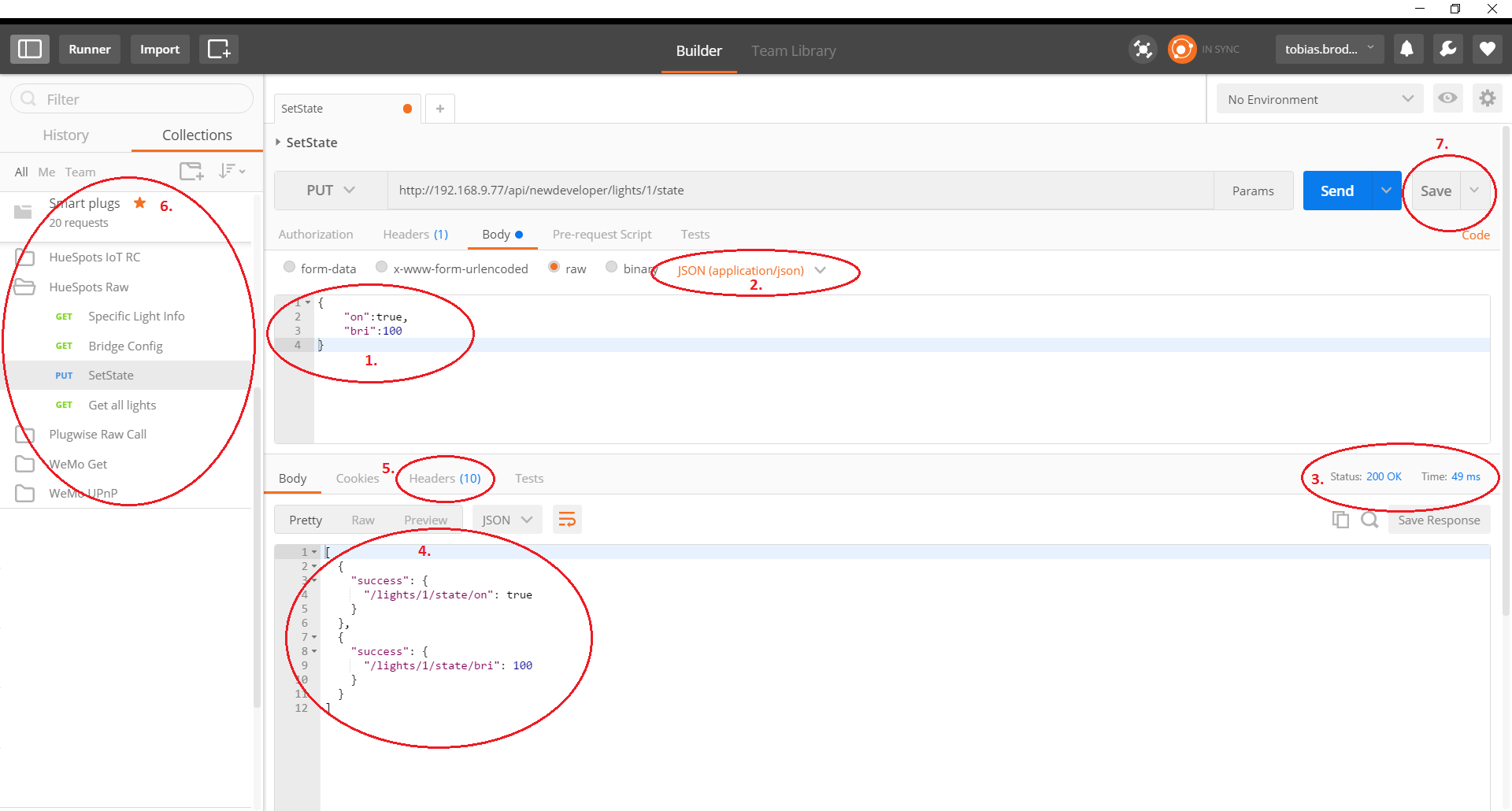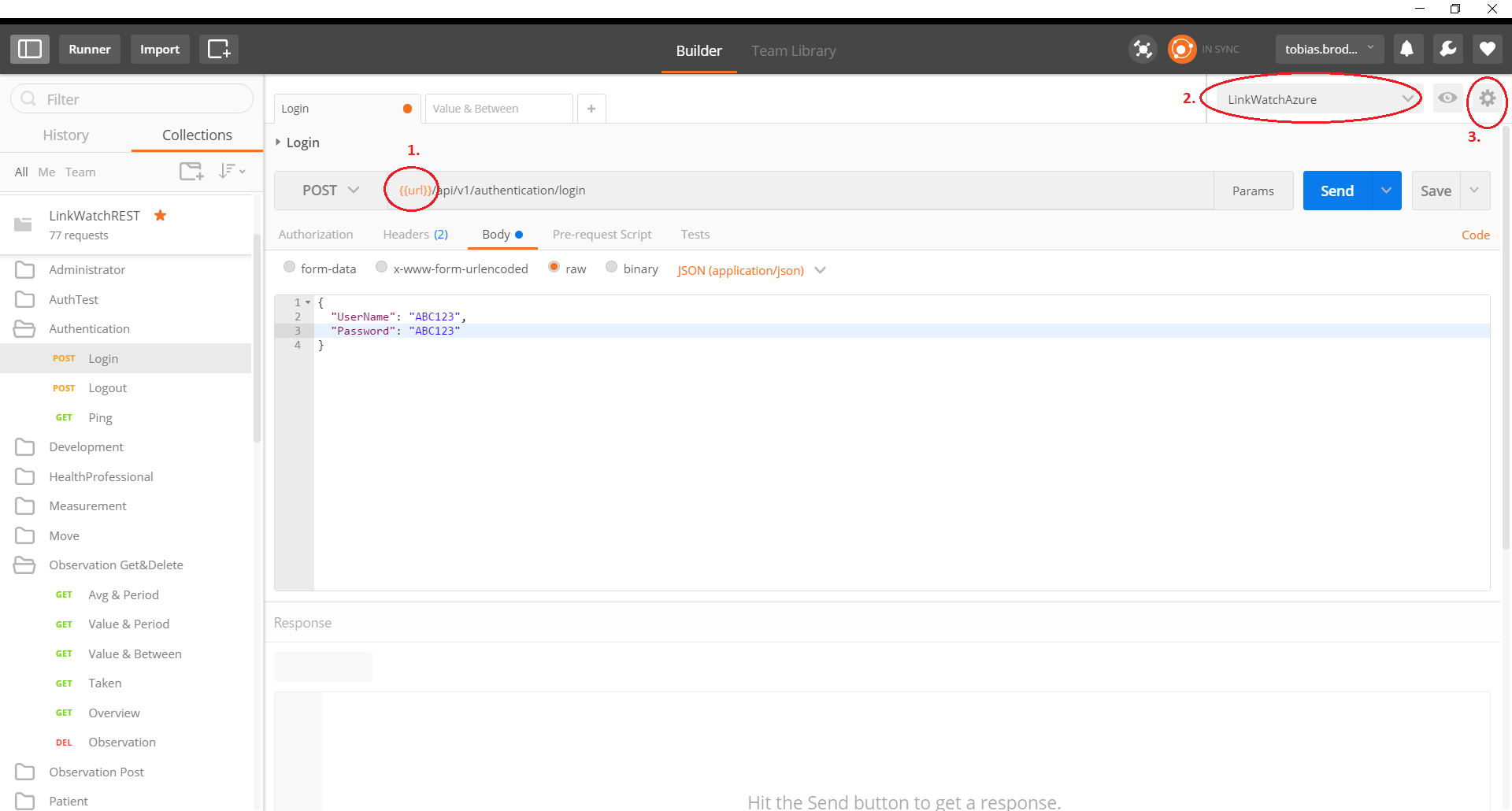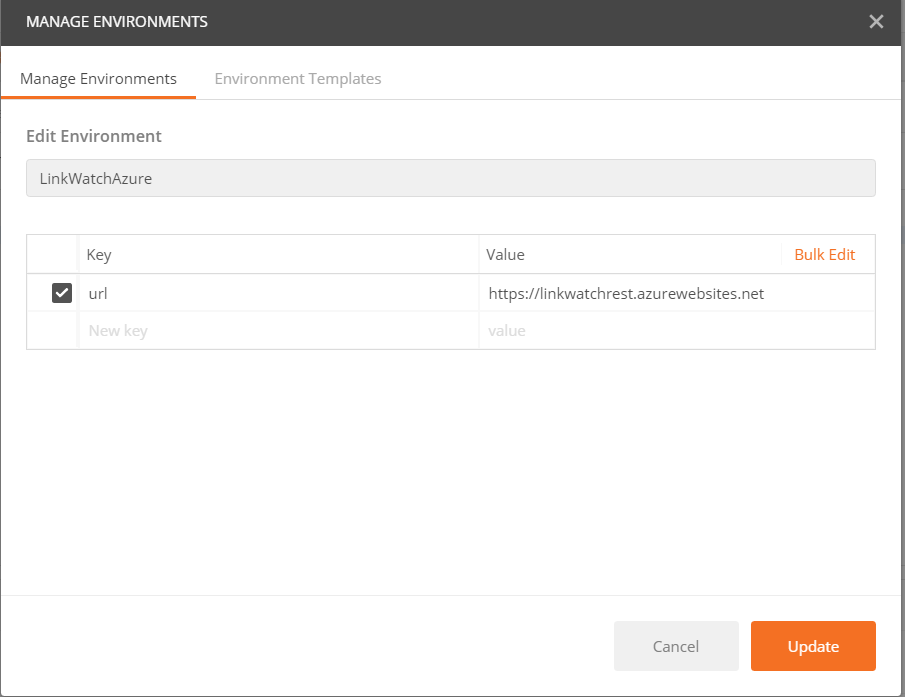Postman description
Is a REST client program which allows to faster develop REST based APIs, share collection of calls and used to test an API before a real implementation. It’s released as both a chrome extension found in the chrome web store or can be downloaded as a standalone program. The free version is good enough.
Stand alone: https://www.getpostman.com/
Chrome extension: https://chrome.google.com/webstore/detail/postman/fhbjgbiflinjbdggehcddcbncdddomop?hl=en
Default
Default start page when starting the postman. It’s possible to build REST call with different HTTP methods, request urls with parameters, add headers and body. Listing the fields in Figure 1.
1. HTTP method, GET, POST, PUT etc. 2. The request url 3. Send button 4. Authorization chooser, supporting different standard authentications. E.g. Basic auth, Oauth 2.0. 5. Add request headers 6. The request body 7. History list of earlier calls 8. Collection of stored calls
Example
Next is a sample of a PUT request call with a JSON body with the fields listed from Figure 2.
1. JSON body in raw format 2. Choose the content-type, the corresponding header will be set. 3. Once the calls are done, the status code and duration will be shown. 4. Response body with from the API will be displayed. 5. Response headers contains all headers received 6. Examples off saved collections. Each call can be saved and structured with folders and subfolders 7. The save button to save the request call
Environment
It’s possible to reuse a collection for different environment (e.g. test, production, local, cloud). In order to manipulate the urls with configurable parts the characters {{ }} are used. See example in Figure 3 from a collection used for LinkWatch API.
1. {{url}} will be changed to the current environment tag set in point 2. 2. Drop down list of all available environment 3. Settings button to add/update or share environment.
Create environment
To add a new environment, press the gear button and chose manage environment. Press add and a new window will appear where the information of the environment can be filled in. Below, see Figure 4, there is an example of the url endpoint to LinkWatch API in Azure. If this is chosen in the drop-down list, the {{url}} part in the request url will be changed to https://linkwatchrest.azurewebsites.net for each call.
LinkWatch API
Here is a link https://www.getpostman.com/collections/3610b13f2b4f37f0223e to the overall methods accessible for the LinkWatch API. If Postman are installed on the computer and the link used, Postman will start and ask if the collection should be stored. The collection can then be found under the Collection tab, point 8 in Figure 1. The LinkWatch API uses the environment configurable parts and needs to have such environment to work.



